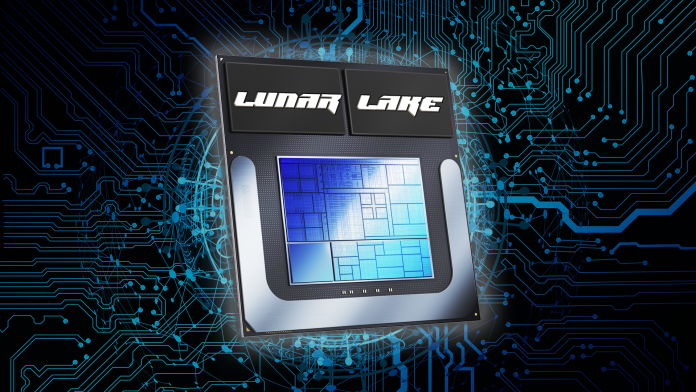Calling Lunar Lake “radical” is like calling a roller coaster “a bit of a thrill.” These upcoming chips are shaking things up big time, ditching Intel’s old MO of cranking up power, core counts, and clock speeds until the battery throws in the towel. Instead, Lunar Lake is Intel’s new strategy, and they spilled the beans at Computex 2024.
We called Intel’s 14th gen CPUS a bit pointless, but Lunar Lake looks anything but.
Intel’s calling Lunar Lake a “radical low-power architecture,” and let’s be honest, that’s spot-on. Lunar Lake is all about conserving energy, so much so that Intel is tossing out the old playbook and even tweaking their manufacturing game.
The core structure is where things get really juicy. Lunar Lake’s got a hybrid setup, like Intel’s usual fare, but it’s giving the Skymont efficient (E) cores the spotlight, leaving the Lion Cove performance (P) cores to chill on the bench.
Gone are the days of the E-cores just handling the boring stuff, like checking your email or streaming cat videos. Intel claims that with Lunar Lake, most tasks will be run by the E-cores, with the P-cores only making a cameo when you need that extra oomph. Think of it as the E-cores holding down the fort while the P-cores show up for the big performance parties.
This is a major plot twist in performance. Before, the E-cores were like the handyman, fixing up small tasks like video streaming, while the P-cores were the superheroes, swooping in for tasks like Microsoft Teams calls. But with Lunar Lake, the E-cores are the new superheroes, ready to tackle anything you throw at them, keeping your experience smooth as butter.
Intel’s really cranked up the E-cores’ power, and they’re making some bold claims. Skymont is allegedly as powerful as Meteor Lake’s E-cores but drinks a third of the power juice, and it’s gunning to double the single-core performance at max power.
This is Intel’s next big leap in chip design, and it could be seriously exciting.
A Roadmap of SKUs for “Lunar Lake” Is Revealed
According to a report on VideoCards.com, the headline act here is the NPU unit, flaunting up to 48 TOPS. These bad boys will have all-new CPU and GPU architectures, borrowing CPU specs from Arrow Lake, featuring Lion Cove Performance Cores and Skymont Efficient Cores in a 4+4 core setup, ideal for low-power mobile gadgets. Arrow Lake, on the other hand, is aiming at your everyday mobile and desktop gear.
Get this: they’re packing in the Xe2-LPG GPU architecture, which is a sneak peek at Intel’s next-gen Battlemage. No word on the discrete versions yet, but Xe2 looks like it might be decent, with brands like MSI already planning to upgrade their Core Ultra 100 gaming handhelds to the 200V series.
We’ve got the scoop on nine different Core Ultra 200V SKUs. Four of them are confirmed, including Core Ultra 7 and Ultra 5 models, coming with either 8 or 7 Xe2-Cores and 32GB or 16GB LPDDR5-8533 memory. Just a heads-up: the memory is soldered on, so forget about upgrading it yourself.
| MODELS | POWER (Base/Turbo) | MEMORY | P-CORE / E-CORE BOOST |
| Core Ultra 9 288V | 30W / 30W | 32GB | 5.1GHz / 3.7GHz |
| Core Ultra 7 268V | 17W / 30W | 32GB | 5GHz / 3.7GHz |
| Core Ultra 7 266V | 17W / 30W | 16GB | 5GHz / 3.7GHz |
| Core Ultra 7 258V | 17W / 30W | 32GB | 4.8GHz / 3.7GHz |
| Core Ultra 7 256V | 17W / 30W | 16GB | 4.8GHz / 3.7GHz |
| Core Ultra 5 238V | 17W / 30W | 32GB | 4.7GHz / 3.5GHz |
| Core Ultra 5 236V | 17W / 30W | 16GB | 4.7GHz / 3.5GHz |
| Core Ultra 5 228V | 17W / 30W | 32GB | 4.5GHz / 3.5GHz |
| Core Ultra 5 226V | 17W / 30W | 16GB | 4.5GHz / 3.5GHz |
Surprise, surprise, there’s a Core Ultra 9 SKU in the works too. Specs are hush-hush, but some insider spilled the beans that it’s happening. The Core Ultra 9 288V will sport a 30W PL1 (Processor Base Power) and 30W PL2 (Maximum Turbo Power), the only one in the lineup to go this high while the others stick to a 17W TDP. This is kinda like what they did with the Core Ultra 100H series, where the Core Ultra 9 185H was the only one with a 45W TDP.
Clock speeds? Expect up to 5.1 GHz for P-Cores and 3.7 GHz for E-Cores. NPU performance will dance between 40 to 48 TOPS, and the XMX (GPU) performance will range from 53 to 67 TOPS, depending on the SKU specifics.
And oh joy, Intel’s decided to simplify their graphics naming scheme. The Core Ultra 9 and Ultra 7 will feature Arc A140V graphics with 8 Xe2-Cores, and the Core Ultra 5 will have Arc A130V with 7 Xe2-Cores, hitting up to 2.05 GHz.
Whispers in the tech alley suggest the Intel Core Ultra 200V series could drop as soon as mid-September. So, keep your eyes peeled and your wallets ready.







